Weekly Current Affairs (1st to 7th June 2025) - 2 | Weekly Current Affairs - UPSC PDF Download
World Environment Day 2025
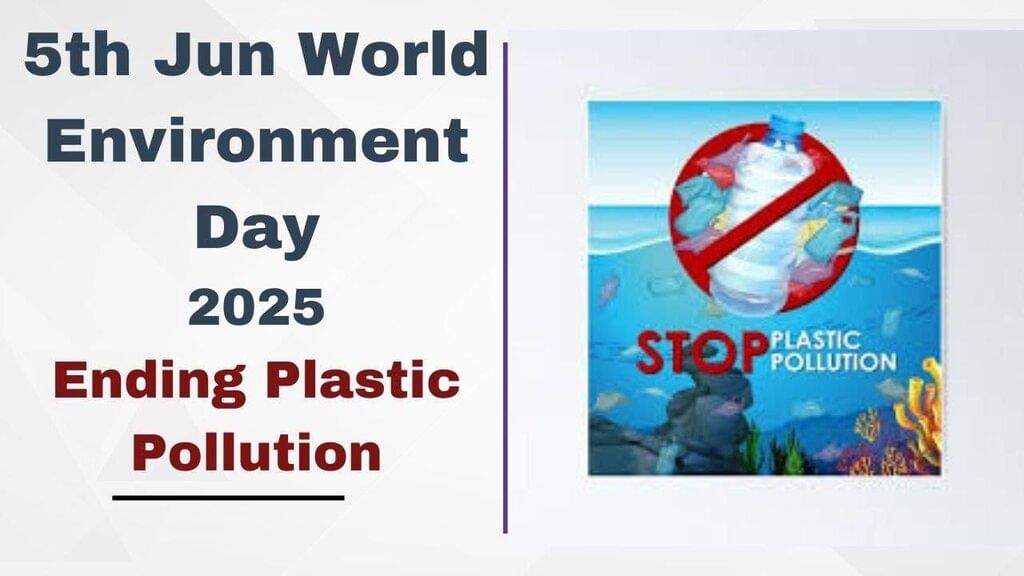 Why in News?
Why in News?
- World Environment Day (WED) 2025 will be celebrated on June 5, 2025, with South Korea (Republic of Korea) as the global host. The Prime Minister of India will plant a Banyan sapling as part of the 'Ek Ped Maa Ke Naam' initiative under the 'Aravalli Green Wall project'.
Key Takeaways
- World Environment Day was established by the United Nations General Assembly in 1972.
- This year's theme is "Beat Plastic Pollution" aimed at raising awareness about plastic usage and disposal.
Additional Details
- Significance: Plastic pollution exacerbates biodiversity loss and climate change. Annually, 11 million tonnes of plastic enter water bodies, while the global cost of plastic pollution is estimated at USD 300–600 billion.
- India contributes approximately 9.3 million tonnes of plastic waste per year, making it one of the top plastic-polluting countries globally.
The high levels of plastic pollution in India are driven by various factors, including:
- High Plastic Consumption: India generates about 3.5 million tonnes of plastic waste annually, with a per capita consumption of around 11 kg due to rising industrialization and consumerism.
- Poor Waste Management: Only 15-20% of plastic waste is recycled, with most ending up in landfills or burnt.
- Domination of Single-Use Plastics: In 2023, 43% of India's plastic waste was single-use plastic, with weak enforcement of bans in some states.
- Plastic Waste in Rivers & Oceans: Major rivers like the Ganga, Indus, and Brahmaputra contribute significantly to plastic waste in the water bodies.
- Rapid Urbanization: Waste from Tier 1 cities constitutes 72.5% of India's daily waste, highlighting planning and governance failures.
Mismanaged plastic waste leads to various issues in India:
- Environmental Degradation: Toxic chemicals from plastic waste affect soil and agriculture. Burning plastic releases harmful dioxins and heavy metals.
- Public Health Risks: Open burning of plastic releases carcinogens that can contaminate food and water sources.
- Economic Costs: India could lose over USD 133 billion in material value due to plastic waste by 2030, with significant municipal spending on waste management.
To strengthen plastic waste management in India, the following steps are recommended:
- Strengthen Policy & Enforcement: Enforce the ban on single-use plastics with strict penalties and ensure compliance with Extended Producer Responsibility (EPR) laws.
- Improve Waste Management Infrastructure: Increase the number of Material Recovery Facilities (MRFs) and integrate informal recycling systems into formal structures.
- Reduce Plastic Use & Promote Alternatives: Impose higher taxes on single-use plastics and encourage the use of biodegradable alternatives.
- Public Awareness & Behavioral Change: Implement community programs to raise awareness about plastic waste management.
- Technological & Innovative Solutions: Invest in technologies like pyrolysis plants to convert non-recyclable plastic into usable products.
In conclusion, the urgent need for action against plastic waste is highlighted. India's initiatives, such as the 'Ek Ped Maa Ke Naam' campaign, reflect its commitment to sustainability. However, stronger policies, public participation, and innovation are crucial to effectively combat plastic pollution and environmental degradation.
Question:
- Discuss the socio-economic impact of mismanaged plastic waste in society. What policy measures can be adopted to address this issue?
India’s Renewable Energy Revolution
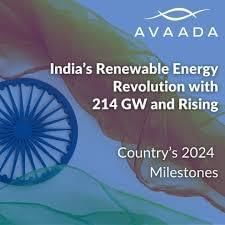 Why in News?
Why in News?
- India has established itself as a global leader in clean energy, achieving a remarkable addition of 29 GW of renewable energy in 2024 alone. With a total installed capacity of 232 GW and an additional 176 GW under construction, India is at the forefront of driving global sustainability efforts through significant reforms and visionary leadership.
Key Takeaways
- India ranks among the top countries globally in solar, wind, and total renewable energy capacity.
- Solar capacity increased from 2.63 GW in 2014 to 108 GW in 2025, marking a 41-fold rise.
- Wind capacity has surpassed 51 GW, with a target of achieving 500 GW of non-fossil capacity by 2030 and 1,800 GW by 2047.
Additional Details
- Reforms Undertaken: Transitioned to market-driven bidding, which replaced feed-in tariffs, leading to a drastic reduction in solar tariffs from Rs 10.95/unit in 2010 to Rs 1.99/unit in 2021.
- Waiver of ISTS Charges: This waiver has eliminated geographical barriers, facilitating nationwide renewable energy distribution.
- Flagship Programs and Initiatives:
- PLI Scheme for Solar Manufacturing has nearly doubled solar module manufacturing capacity from 38 GW in March 2024 to 74 GW in March 2025.
- PM Surya Ghar: Muft Bijli Yojana aims for a decentralized capacity of 30 GW across 1 crore households.
- PM-KUSUM provides up to 60% subsidy for solar pumps, benefiting farmers with daytime power and additional income.
- The National Green Hydrogen Mission (NGHM) aims to produce 5 MMT of green hydrogen annually by 2030, supported by investments in Green Energy Corridors.
- Ethanol Blended Petrol (EBP) Programme: Ethanol blending in petrol increased from 1.5% in 2013 to 15% in 2024, saving Rs 1.26 lakh crore in foreign exchange.
- Sustainable Alternative Towards Affordable Transportation (SATAT): This initiative has commissioned over 100 compressed biogas plants and aims for a 5% CBG blending mandate by 2028.
- Emerging Energy Frontiers:
- Offshore wind initiatives target 37 GW of tenders by 2030, with pilot projects in Gujarat and Tamil Nadu.
- Hybrid and round-the-clock power policies encourage wind-solar hybrids to provide firm and dispatchable renewable energy solutions.
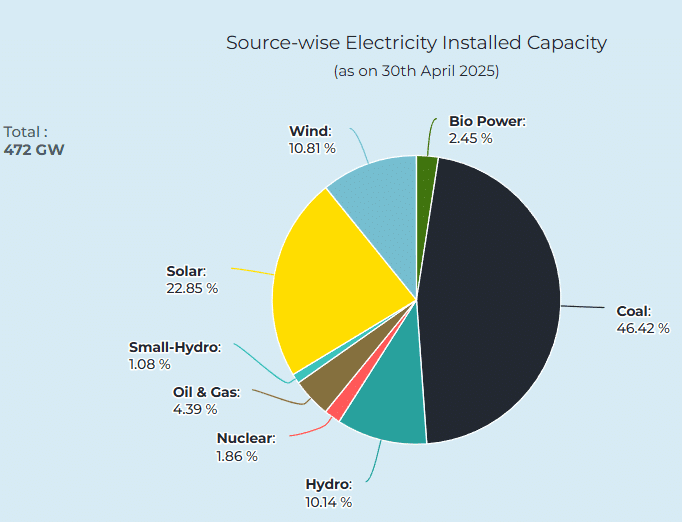
Despite its advancements, India's renewable energy sector faces significant challenges, including financing gaps, grid integration issues, and supply chain vulnerabilities. Addressing these challenges is crucial for achieving the ambitious targets set for renewable energy capacity.
Mains Question:
- Discuss the key reforms that have enabled India’s rapid renewable energy expansion and their impact on global sustainability efforts.
Synchronising Irrigation and Cropping
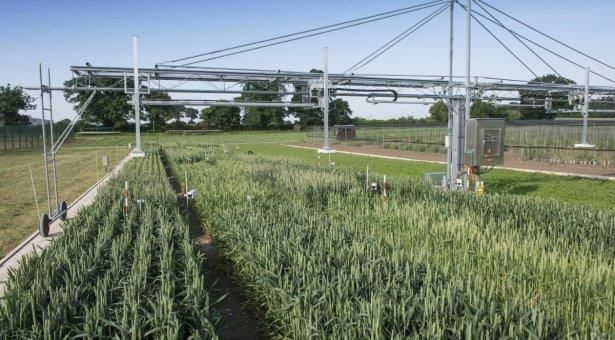 Why in News?
Why in News?
India’s agriculture has traditionally assumed that expanding irrigation automatically leads to a shift towards water-intensive crops. However, data from 2011-12 to 2022-23 indicates that irrigation and cropping decisions are made concurrently, influenced by immediate factors such as rainfall and market conditions. Understanding this relationship is crucial for making irrigation investments more effective and sustainable.
Key Takeaways
- Irrigation enables farmers to transition from subsistence crops to high-value crops.
- Areas with robust irrigation infrastructure exhibit more intensive and commercialized cropping patterns.
- Real-time factors often influence crop choices beyond just irrigation availability.
Additional Details
- Irrigation and Cropping Patterns: Reliable irrigation allows farmers to shift from traditional crops (e.g., millets) to high-value crops (e.g., fruits and cash crops like sugarcane and cotton). It also facilitates multiple cropping, enhancing land use efficiency.
- Timing of Irrigation: Effective irrigation must coincide with the sowing season. Delayed infrastructure impacts negatively on crop decisions, as farmers prioritize current rainfall, prices, and resource availability.
- Trends in Irrigation: The Gross Irrigated Area (GIA) increased from 91.8 million hectares in 2011-12 to 122.3 million hectares in 2022-23, reflecting a growing reliance on irrigation.
In conclusion, synchronizing irrigation with cropping decisions is essential for enhancing agricultural productivity, ensuring efficient water use, and fostering sustainable practices amid changing climatic conditions. It is imperative to evolve from traditional irrigation planning to more adaptive, region-specific strategies that consider local agro-climatic conditions.
Regulation under Article 240 and Ladakh’s Demand for 6th Schedule
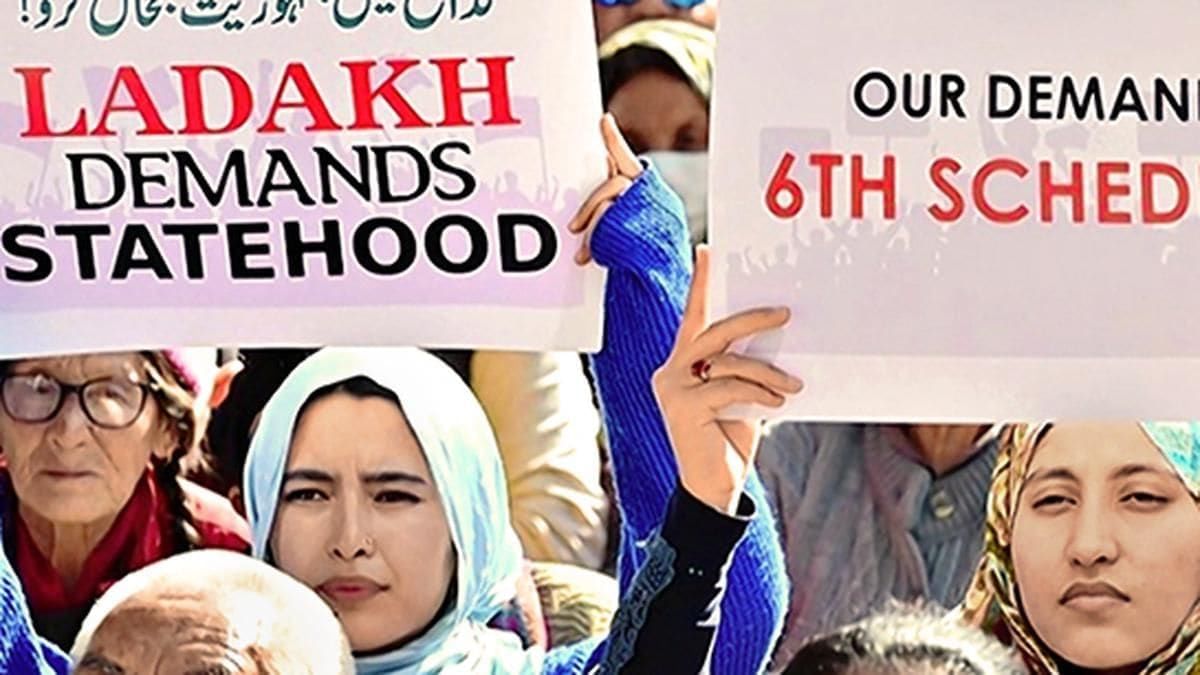 Why in News?
Why in News?
To address the long-standing demands for job reservations, language recognition, and political representation of Ladakh’s people, the Centre has issued new regulations for Ladakh, rather than granting the Sixth Schedule status as was widely requested.
Key Takeaways
- Following the abrogation of Article 370 in August 2019 and the implementation of the Jammu and Kashmir Reorganisation Act, 2019, Ladakh was designated as a Union Territory without a legislature.
- The Leh Apex Body (LAB) and Kargil Democratic Alliance (KDA) have advocated for Ladakh's inclusion in the Sixth Schedule of the Constitution for the protection of their land, jobs, and cultural identity.
Additional Details
- Key Demands:
- Inclusion under the Sixth Schedule for constitutional protection.
- Land ownership restrictions to prevent outsider influx.
- Legislative Assembly for representative governance.
- The Union government proposed extending Article 371-like protections to the region as an alternative.
Key Regulations for Ladakh
- Domicile Based Protection: Domicile-based job reservations for all government jobs have been introduced, including criteria such as 15 years of residency and completion of Class 10 or 12 from Ladakh.
- Provision for Reservations: Total reservations for SCs, STs, OBCs, and other socially and educationally backward groups are capped at 85%, with a 10% reservation for Economically Weaker Sections (EWS).
- Preservation of Local Languages: English, Hindi, Urdu, Bhoti, and Purgi are designated as official languages, promoting Shina, Brokskat, Balti, and Ladakhi to preserve linguistic diversity.
- Representation for Women:The LAHDC Act, 1997 has been amended to reserve one-third of the seats for women in the LAHDC of Leh and Kargil through rotation.
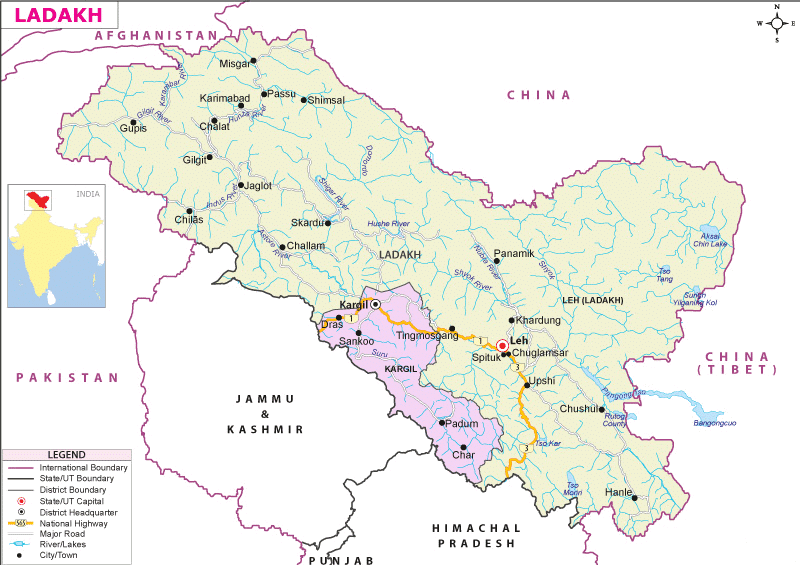
Why are Ladakhis Demanding 6th Schedule Status of the Constitution?
- Constitutional Protection: Demanded for greater autonomy and security, as regulations can be revoked or amended unilaterally by the Centre.
- Safeguards for Land Rights: Essential to restrict non-domiciles from buying land in Ladakh to protect its fragile ecosystem.
- Legislative Autonomy: Sixth Schedule provides for Autonomous District Councils (ADCs) with powers to legislate on crucial local matters.
- Symbolic Cultural Recognition: Essential for preserving indigenous languages and ensuring education in local dialects.
What is the Sixth Schedule of the Indian Constitution?
- About: Articles 244(2) provide for the administration of tribal areas in the four northeastern states: Assam, Meghalaya, Tripura, and Mizoram.
- Key Features:
- Constitution of Autonomous Districts remains under the executive authority of the respective state.
- District councils can legislate on local matters, subject to the Governor’s assent.
- Judicial powers allow councils to manage tribal disputes.
- Administrative powers include managing schools, markets, and land revenue.
- Acts of Parliament or state legislature may not apply to these autonomous regions unless modified.
What Measures Can Address Ladakh’s Unique Needs?
- Constitutional Safeguards: If Sixth Schedule inclusion is not viable, a customized framework can be enacted to safeguard Ladakh's demographic identity.
- Land Safeguards: Implement regulations to prevent outside acquisition and protect traditional livelihoods.
- Strengthening LAHDCs: Grant legislative powers to manage local resources and regional development.
- Environmental and Tourism Regulation: Enforce policies for sustainable tourism and community-led conservation.
The new Ladakh regulations issued by the Centre do not fully address the demands for Sixth Schedule protections. Key issues regarding land rights and legislative autonomy remain unresolved. A customized constitutional safeguard and empowered LAHDCs are essential for balancing tribal rights and ecological sustainability in this strategic region.
Mains Question:
- Examine the significance of the Sixth Schedule of the Indian Constitution and evaluate its applicability to Ladakh in the context of recent demands and regulations.
Foreign Direct Investment in India
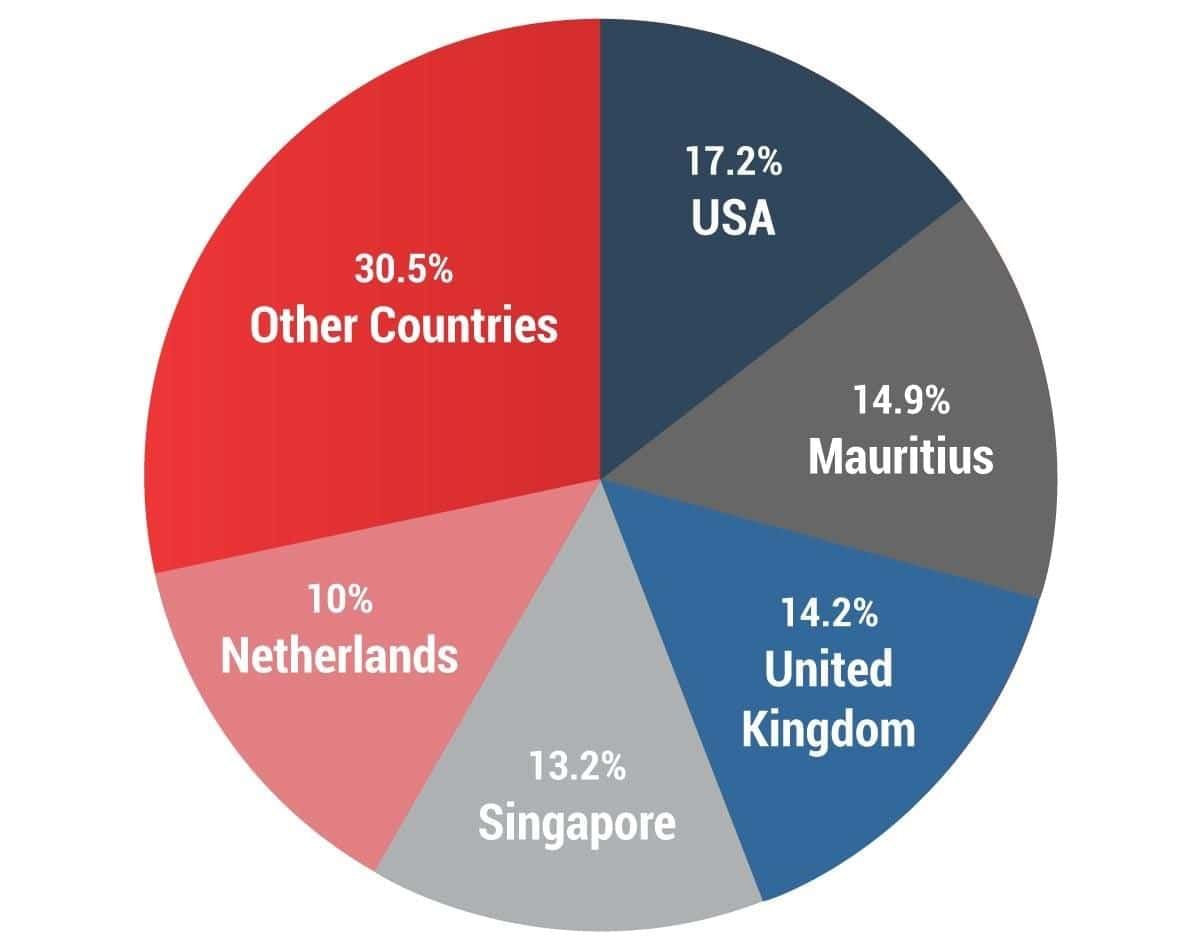 Why in News?
Why in News?
- According to the Reserve Bank of India (RBI), India’s net foreign direct investment (FDI) significantly decreased from USD 10.1 billion in 2023-24 to just USD 0.4 billion in 2024-25. This sharp decline is primarily attributed to increased repatriation and disinvestment by foreign firms, which totaled USD 51.5 billion in 2024-25, along with a rise in Outward FDI (OFDI) by Indian companies.
Key Takeaways
- Net FDI in India fell drastically due to high repatriation and disinvestment.
- Outward FDI by Indian companies increased significantly, indicating a shift in investment strategies.
Additional Details
- What is Foreign Direct Investment (FDI): FDI refers to investments made by a person residing outside India through capital instruments in either an unlisted Indian company or in at least 10% of the post-issue paid-up equity capital of a listed Indian company. It typically represents a long-term investment and mainly indicates a non-debt capital flow.
- FDI Routes:Under the FDI Scheme, non-residents can invest in Indian companies through two routes:
- Automatic Route: Investors need only inform the RBI after making the investment. Examples include sectors like agriculture, air transport, and biotechnology.
- Government Approval Route: Investors must obtain prior approval from the relevant Ministry or department before proceeding, applicable to sectors such as banking, broadcasting, and retail trading.
- FDI Regulation: Currently, FDI in India is regulated by the FDI Policy 2020 and the FEMA (Non-debt Instrument) Rules, 2019, under the Foreign Exchange Management Act (FEMA), 1999. The Department for Promotion of Industry and Internal Trade (DPIIT) under the Ministry of Commerce and Industry is the main regulatory body responsible for enforcing FDI rules.
- Current Status of FDI in India: Gross FDI inflows rose to USD 81 billion from USD 71.3 billion in 2022-23, with key sectors attracting FDI being manufacturing, financial services, and communication services.
- Outward FDI by Indian Companies: Outward FDI surged to USD 29.2 billion, a 75% increase from the previous year, with top destination countries including the Netherlands.
Foreign Direct Investment is crucial for India's sustainable economic transformation as it supports macroeconomic growth, creates employment opportunities, promotes advanced technology and innovation, leads to infrastructure development, enhances exports, and encourages competition and efficiency within the market.
Barriers to Attracting and Sustaining FDI
- Challenging Regulatory Environment: Complex regulations and tax laws create compliance challenges for foreign investors.
- Infrastructural Deficiencies: India still faces inadequate infrastructure, which increases the cost of doing business and discourages FDI.
- Challenges in Market Competition: Structural challenges hinder fair competition, affecting foreign investment attractiveness.
- Environmental and Sustainability Concerns: Inconsistent enforcement of environmental regulations raises concerns for global investors focused on sustainability.
Measures to Boost FDI Inflows
- Policy & Regulatory Reforms: Implementing a single-window clearance for FDI approvals and establishing clear frameworks for dispute resolution may enhance investor confidence.
- Addressing Structural Challenges: Offering incentives and tax breaks to boost underdeveloped sectors can attract more FDI.
- Infrastructure and Skill Development: Investing in infrastructure and improving skill development in Tier-II and Tier-III cities can make these areas more attractive to foreign investors.
Despite strong gross inflows, India's net FDI has seen a decline due to rising disinvestment and outward FDI. Addressing regulatory bottlenecks, infrastructure gaps, and sectoral imbalances is vital for creating a balanced, investor-friendly environment that fosters equitable regional growth and ensures sustainable economic development.
Mains Question:
- Evaluate the role of Foreign Direct Investment in India’s economic development. What steps can be taken to make FDI more inclusive and sustainable?
NITI Aayog Calls for Cooperative Federalism
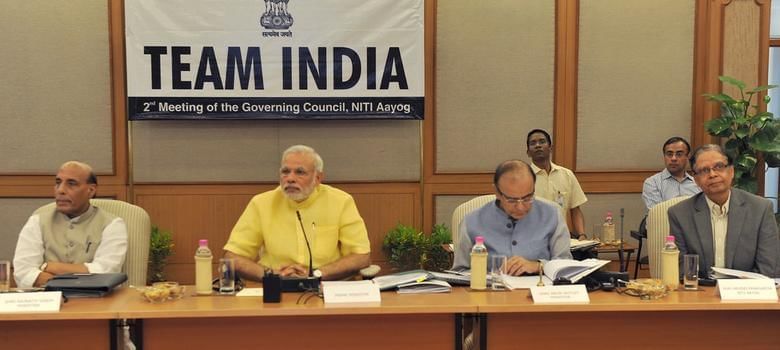 Why in News?
Why in News?
- The 10th meeting of the Niti Aayog Governing Council was convened under the theme: Viksit Rajya for Viksit Bharat@2047. This meeting highlighted the importance of promoting cooperative federalism as a means to achieve national development goals.
Key Takeaways
- State-Specific Demands: Tamil Nadu requested a 50% share in central taxes (up from 33%) and proposed a Clean Cauvery Mission. Punjab called for fair Yamuna water rights, financial assistance, border security, and drug control.
- Emphasis on Trade & Investment: States were urged to eliminate policy bottlenecks and outdated laws, creating investor-friendly environments. NITI Aayog was tasked with drafting an Investment-friendly Charter to attract global investments.
- Security Preparedness: The Prime Minister stressed the need for long-term security measures and modern civil defense systems. The Operation Sindoor initiative, aimed at targeting terror infrastructure in Pakistan, received unanimous support.
- Economic & Industrial Development: The Chief Minister of Chhattisgarh introduced a 3T model (Technology, Transparency, Transformation) to double the state's GSDP in five years. Andhra Pradesh proposed sub-groups focusing on GDP growth and AI-driven governance.
- Sustainable Development & Social Reforms: There was a call for establishing global-standard tourist spots (one per state), promoting green energy, focusing on urban planning, and enhancing women's workforce participation.
Additional Details
- Role of NITI Aayog in Fostering Cooperative Federalism:
- Strengthened Competitive Federalism: Promotes healthy competition among states through data-driven indexes like the Fiscal Health Index and the Aspirational District Programme (ADP).
- Enhanced Cooperative Federalism: Acts as a bridge between central and state governments, aligning regional priorities with national goals through initiatives such as the Team India Hub.
- Governance & Policy Advisory: Focuses on policy advisory rather than just financial allocations, supporting states in establishing State Institutions of Transformation (SITs).
- Digital Transformation: Drives innovation through the Atal Innovation Mission, the Knowledge and Innovation Hub, and the National Data and Analytics Platform.
- Challenges in Advancing Cooperative Federalism:
- Lack of Federal Dialogue: Limited meetings of the NITI Aayog governing council and delayed GST Council sessions hinder collaborative solutions.
- Undermining Federalism: Financial leverage by the Centre can undermine cooperative federalism, as seen in withholding funds for Tamil Nadu over policy disagreements.
- Unfair Tax Devolution: Disparities in tax devolution lead to fiscal inequalities between richer and poorer states.
The 10th NITI Aayog meeting emphasized both the progress and the challenges in India's pursuit of cooperative federalism. Initiatives such as state partnerships and investment reforms hold promise, but achieving a truly collaborative "Team India" approach necessitates fair fiscal devolution, regular dialogue, and depoliticized governance. Addressing these issues is vital to realizing the vision of Viksit Bharat by 2047.
Mains Question:
- Examine the role of states in making India a developed country. Suggest measures to foster inter-state collaboration for Viksit Bharat@2047.
Neolithic Site Daojali Hading in Assam
Why in News?
- Recent archaeological discoveries at Daojali Hading, located in the Dima Hasao district of Assam, have confirmed its significance as a Neolithic habitation site dating back over 2,700 years. These findings have unveiled a range of domestic artefacts and evidence of early metallurgical activities.
Key Takeaways
- Daojali Hading is situated in the Langting-Mupa Reserve Forest and was initially uncovered during the 1960s by T.C. Sharma and M.C. Goswami.
- Artefacts recovered from the site include various tools and pottery that illustrate the daily lives of its ancient inhabitants.
Additional Details
- Artefacts:The site has yielded a variety of artefacts, such as:
- Polished double-shouldered celts (chiselled stone tools)
- Cord-marked pottery
- Mortars and pestles
- Grinding stones
- Low-fired potsherds
- Charcoal samples
- The discovery of jadeite stones, which are also found in China, indicates potential ancient trade links with regions in East and Southeast Asia.
About the Neolithic Age, also known as the New Stone Age, this era marked the final phase of the Stone Age, beginning around 9000 BCE (with variations by region) and continuing until the rise of metal tools around 3000 BCE. Key features of this period include:
- Agriculture: Introduction of crops such as wheat, barley, rice, and millet, alongside the domestication of animals like cattle, sheep, and goats.
- Permanent Settlements: Development of mud-brick or stone houses, as exemplified by sites like Mehrgarh in Baluchistan.
- Polished Stone Tools: Advancements in tool-making, including axes, sickles, and grinding stones.
- Potter’s Wheel: Emergence after 4500 BCE, marking a significant advancement in pottery production.
- Social Structures: Development of complex societies, evidenced by burial rituals and early religious symbols.
Prominent Neolithic Sites
- Northwest India: Mehrgarh (now in Pakistan), Burzahom, Gufkral (Kashmir).
- Northern & Central India: Senuwar (Bihar), Koldihwa & Mahagara (Uttar Pradesh), Bagor (Rajasthan), Adamgarh (Madhya Pradesh).
- Northeastern India: Daojali Hading & Sarutaru (Assam), Napachik and Laimanai (Manipur).
- Southern India: Brahmagiri & Maski (Karnataka), Paiyampalli (Tamil Nadu).
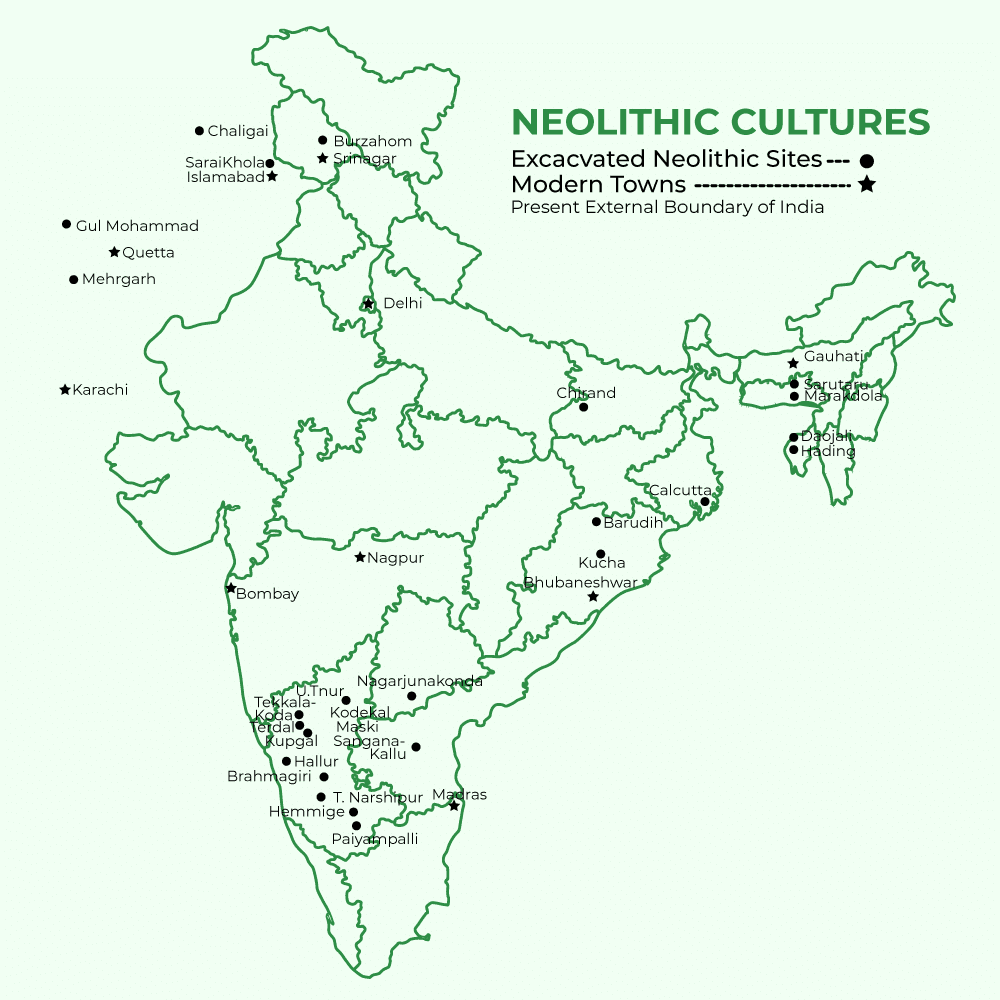
In conclusion, the archaeological findings at Daojali Hading provide valuable insights into the Neolithic lifestyle and its connections with broader trade networks, enhancing our understanding of early human civilization in this region.
|
287 docs|142 tests
|
FAQs on Weekly Current Affairs (1st to 7th June 2025) - 2 - Weekly Current Affairs - UPSC
| 1. What is the significance of World Environment Day and how does it relate to global environmental initiatives? |  |
| 2. How is India progressing in its renewable energy sector, and what are the key initiatives? |  |
| 3. What are the benefits of synchronizing irrigation and cropping practices in agriculture? |  |
| 4. What is the relevance of Article 240 in the context of Ladakh's demand for the 6th Schedule? |  |
| 5. How does Foreign Direct Investment (FDI) impact India's economy? |  |





















